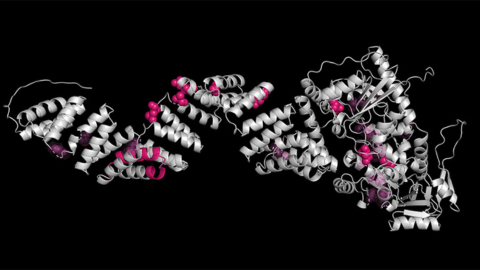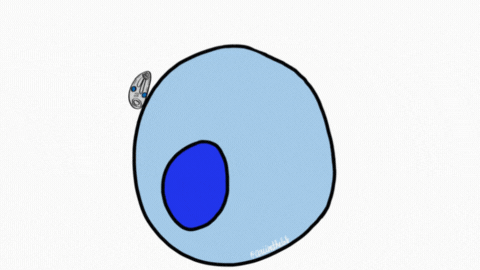Decisions and fates
Is it possible to build a functional cell from scratch? If so, what are the minimum components needed, and what molecular mechanisms are necessary to control their behavior and ensure they function in a coordinated manner?
Talks
- Mechanical principles of nuclear shaping and positioning — Tanmay Lele, University of Florida
- Longitudinal analysis of genetic networks as determinants of lifespan in C. elegans — Adriana San-Miguel, North Carolina State University
- Clocks, hourglasses and history-dependent clocks — Arvind Murugan, University of Illinois, Chicago
- Synthetic NF-kB: A building approach to study complex signaling behaviors — Ping Wei, Center for Quantitative Biology, Peking University
- Computational approaches to predicting transcription factor binding and kinetics — Polly Fordyce, Stanford University
- Synthetic genetic circuits — Domitilla Del Vecchio, Massachusetts Institute of Technology
How do cells make the decisions that determine their fate and the fate of the organisms they constitute?
These and other fundamental questions about the rules of life are the focus of this track. The answers to these questions have the potential to uncover the molecular rules that govern life as we know it. Although this is fascinating on its own, the answers to these questions also will provide insights into the molecular mechanisms underlying health and disease. It is only in the past two decades that we have had the molecular tools and instrumentation necessary to ask these questions.
The speakers in this track use computational, modeling and good old-fashioned biochemistry and molecular biology approaches to capture dynamic data, analyze changes over time and make predictions about responses and behaviors that would not be possible with experimental approaches alone.
Keywords: computation, modeling, cell fate, cell decision, signal transduction, synthetic cell.
Who should attend: biochemists, molecular biologists, computational biologists and cell biologists interested in the fundamental rules that govern life as we know it.
Theme song: “It’s the End of the World as We Know It” by R.E.M.
This track is powered by interdisciplinary biochemical, molecular and computational approaches.
(Sponsored by the ASBMB Minority Affairs Committee.)
Enjoy reading ASBMB Today?
Become a member to receive the print edition four times a year and the digital edition monthly.
Learn moreFeatured jobs
from the ASBMB career center
Get the latest from ASBMB Today
Enter your email address, and we’ll send you a weekly email with recent articles, interviews and more.
Latest in Careers
Careers highlights or most popular articles

Upcoming opportunities
Friendly reminder: May 12 is the early registration and oral abstract deadline for ASBMB's meeting on O-GlcNAcylation in health and disease.

Sketching, scribbling and scicomm
Graduate student Ari Paiz describes how her love of science and art blend to make her an effective science communicator.

Embrace your neurodivergence and flourish in college
This guide offers practical advice on setting yourself up for success — learn how to leverage campus resources, work with professors and embrace your strengths.

Upcoming opportunities
Apply for the ASBMB Interactive Mentoring Activities for Grantsmanship Enhancement grant writing workshop by April 15.

Quieting the static: Building inclusive STEM classrooms
Christin Monroe, an assistant professor of chemistry at Landmark College, offers practical tips to help educators make their classrooms more accessible to neurodivergent scientists.

Unraveling oncogenesis: What makes cancer tick?
Learn about the ASBMB 2025 symposium on oncogenic hubs: chromatin regulatory and transcriptional complexes in cancer.

